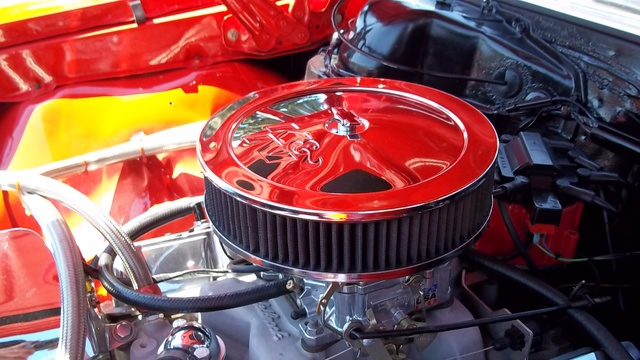
With a total first generation production of 36,409, General Motors decided enough was enough and discontinued the model.Ĭhevrolet discontinued the first generation of El Camino in 1960 due to its falling sales and a changing market. Unfortunately, sales were an abysmal 14,163 in total for 1960. Fuel-injected engines were gone and the 283-cid V8 was tuned-down for fuel economy, dropping the rating down to 170 bhp. There seat was made of cloth with vinyl facings, and the trim shade options were grey, green and blue. In 1960 a more conservative design came out. In fact, there were only 21,706 Rancheros made in 1957. In 1959 only 22,246 El Caminos were produced, but that was still more than the Ford Ranchero which sold around 14,000 units that year. It had a payload rating ranging from 650 to 1150 pounds and gross weights from 4400 to 4900pounds.Īs for performance, the engines offered were a 283-cid Turbo Jet V8 with 2-barrel or 4-barrel carburetion, Turbo-Thrust 348-cid V8s with 4-barrel or triple 2-barrel carburetors producing 335 bhp and 250 and 290 bhp 283 cube Ramjet Fuel Injection V8s.

Chevy would describe the El Camino as “more than a car, more than a truck” and it was promoted as the first Chevrolet pickup built with a steel bed floor, which was corrugated sheet metal.

The chassis was Chevrolet’s “Safety-Girder” X-frame design which was introduced in 1958. During 1959, Chevrolet introduced the bat-wing Chevys and the El Camino was available with any of the trim and drivetrain options that the other cars had. When the El Camino production began in 1959, the Ford Ranchero had already been in production for two years. Chevrolet would respond to this competition with the 1959 El Camino. In 1957 Ford introduced the Ford Ranchero. During this time GMC had the Suburban Carrier with all the same features. Later, from 1937 to 1939, Studebaker manufactured the Coupe’ Express.Ĭhevrolet introduced the Cameo Carrier pickup truck in 1955, and while it was a type of light-duty pickup like the Chevrolet Task Force, it had fiberglass rear fenders, a great interior, slick two-tone paint and a V8 engine and automatic transmission.

In 1935 the Australian subsidiary of General Motors’, Holden, came out with a Chevrolet coupe utility as well. While the body style of the El Camino didn’t make its debut on the North American market until 1957 with the Ford Ranchero, the first company to actually build a coupe utility was Ford Australia back in 1934. The El Camino had the body of an Impala with the Sedan pickup-truck back end and was one of the most iconic muscle cars of the 60’s and 70’s. Known as the “business in the front, party in the back” vehicle to some, the classic Chevrolet El Camino combined both style and functionality in one vehicle.


 0 kommentar(er)
0 kommentar(er)
